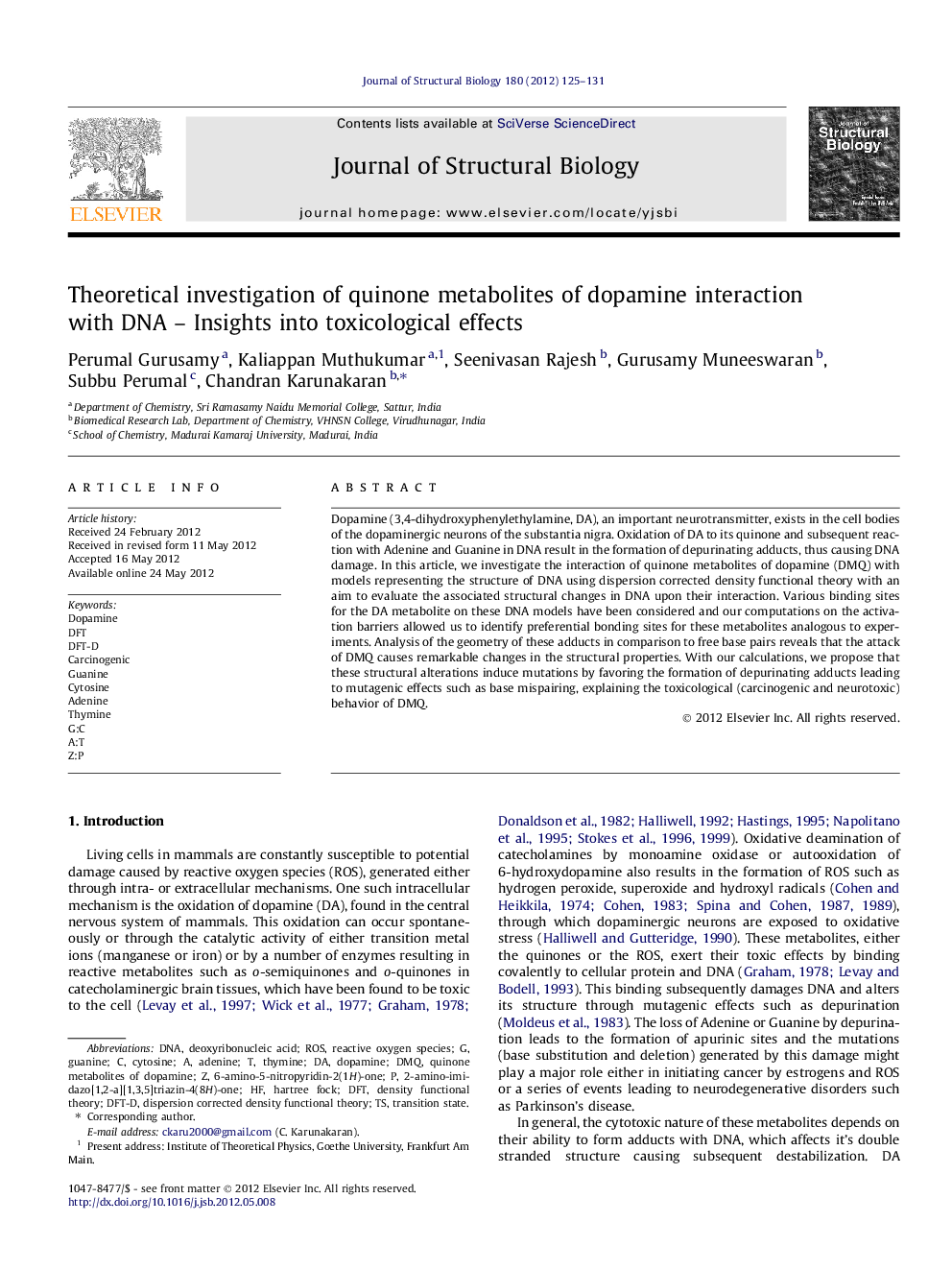| Article ID | Journal | Published Year | Pages | File Type |
|---|---|---|---|---|
| 5914568 | Journal of Structural Biology | 2012 | 7 Pages |
Abstract
Dopamine (3,4-dihydroxyphenylethylamine, DA), an important neurotransmitter, exists in the cell bodies of the dopaminergic neurons of the substantia nigra. Oxidation of DA to its quinone and subsequent reaction with Adenine and Guanine in DNA result in the formation of depurinating adducts, thus causing DNA damage. In this article, we investigate the interaction of quinone metabolites of dopamine (DMQ) with models representing the structure of DNA using dispersion corrected density functional theory with an aim to evaluate the associated structural changes in DNA upon their interaction. Various binding sites for the DA metabolite on these DNA models have been considered and our computations on the activation barriers allowed us to identify preferential bonding sites for these metabolites analogous to experiments. Analysis of the geometry of these adducts in comparison to free base pairs reveals that the attack of DMQ causes remarkable changes in the structural properties. With our calculations, we propose that these structural alterations induce mutations by favoring the formation of depurinating adducts leading to mutagenic effects such as base mispairing, explaining the toxicological (carcinogenic and neurotoxic) behavior of DMQ.
Keywords
Related Topics
Life Sciences
Biochemistry, Genetics and Molecular Biology
Molecular Biology
Authors
Perumal Gurusamy, Kaliappan Muthukumar, Seenivasan Rajesh, Gurusamy Muneeswaran, Subbu Perumal, Chandran Karunakaran,
